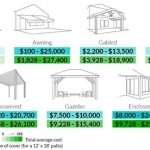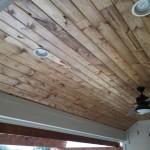How to Install a Deck Over a Concrete Patio
Adding a deck over a concrete patio can provide a new dimension to your outdoor living space. It introduces a warm, natural element and allows for a different aesthetic, while still retaining the existing concrete surface for functionality. Installing a deck over concrete requires careful planning and construction, but the process is manageable for DIY enthusiasts with basic carpentry skills. This guide provides a step-by-step breakdown of how to install a deck over a concrete patio, ensuring a durable and aesthetically pleasing outcome.
1. Planning and Preparation
Initial planning and preparation are crucial for a successful deck installation. Before purchasing any materials or starting construction, take the following steps:
- Obtain Permits: Check with your local building department for any necessary permits for deck construction. Depending on your location and deck size, permits may be required to ensure compliance with building codes.
- Site Survey: Measure the concrete patio's dimensions and assess its condition. Ensure the surface is level and free of any cracks or unevenness that could affect the deck's stability. If necessary, repair or level the concrete before proceeding.
- Choose Deck Design: Consider the desired size, shape, and style of the deck. Consider the existing patio layout, available space, and the surrounding landscaping to make the deck seamlessly integrate with your outdoor space.
- Material Selection: Choose the appropriate deck materials. Common options include pressure-treated lumber, composite decking, or redwood. Consider factors like durability, aesthetics, maintenance requirements, and budget when making your selection.
- Obtain Materials: Once you have finalized the design, purchase all necessary materials, including lumber, fasteners, joists, ledger boards, post anchors, and any additional components for railings, stairs, or other design elements.
2. Building the Framing
The framing provides the structural foundation for the deck. Building a strong and level frame is crucial for its stability and longevity. Follow these steps:
- Attach the Ledger Board: The ledger board serves as the primary connection point between the deck and the concrete patio. Install the ledger board along the edge of the patio using lag screws and a drill. Ensure the ledger board is level and securely attached. Use a level and a drill for precise and secure installation.
- Install Joist Hangers: Joist hangers are metal brackets that attach the deck joists to the ledger board. These hangers provide secure connections and ensure proper support for the deck boards. Install the hangers along the ledger board at the appropriate spacing for your chosen joist size and deck design.
- Install Joists: Attach the deck joists to the joist hangers and the ledger board. Ensure the joists are level and spaced evenly. Use appropriate lengths and types of fasteners for secure connections.
- Install Support Posts: Depending on the size and design of your deck, you may need to install support posts for additional strength and stability. Use post anchors to secure the posts to the concrete patio. Check local building codes for specific requirements regarding post locations and sizes.
3. Installing the Decking
Once the framing is complete, you can install the deck boards. This step adds the final layer to your deck, creating a durable and aesthetically pleasing surface.
- Lay the Deck Boards: Start by laying the first deck board along the edge of the patio. Secure it to the joists using appropriate screws and a drill. Ensure the boards are aligned and evenly spaced.
- Continue Laying Boards: Continue laying the remaining deck boards, ensuring they are securely attached to the joists. Leave a small gap between boards for expansion and drainage. This gap allows for natural expansion and contraction of the wood due to temperature changes.
- Cut and Fit Boards: For areas where the deck boards need to be cut, use a circular saw or miter saw to make precise cuts. Fit the cut boards into place and secure them to the joists.
- Finish the Deck: Once all the boards are installed, finish the deck by sanding the surface smooth and applying a stain or sealant. This will enhance the appearance and protect the wood from weathering and decay.
Remember to follow all safety precautions while working with power tools and ensure you have the necessary skills and tools for each step. If you are not confident in your abilities, consider hiring a professional contractor for the deck installation.

3 Deck Tips Over Concrete Trex

Building A Deck Over Concrete Patio Step By Guide

Diy Turning A Cement Porch Into Wood Deck Catz In The Kitchen

Can I Build A Deck Over Concrete Patio Pool Or Septic Tank

Install A Ground Level Deck Over Concrete Patio

Diy Turning A Concrete Slab Into Covered Deck Backyard Over Decks

Diy Turning A Concrete Slab Into Covered Deck Catz In The Kitchen

Building A Deck Over Concrete Patio Step By Guide

Decking Installation Best Practices Overview Timbertech

How You Can Build A Wood Deck Over Concrete Porch








